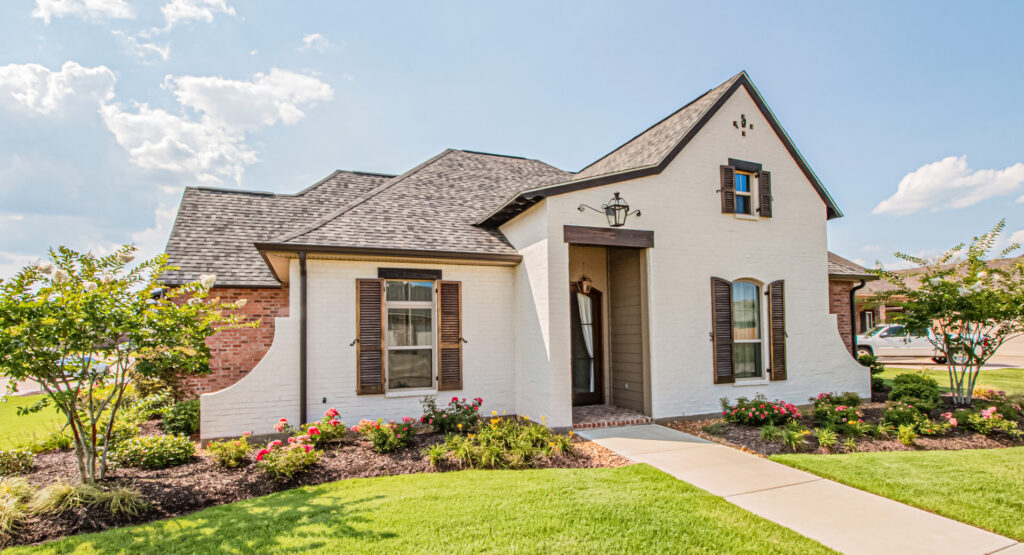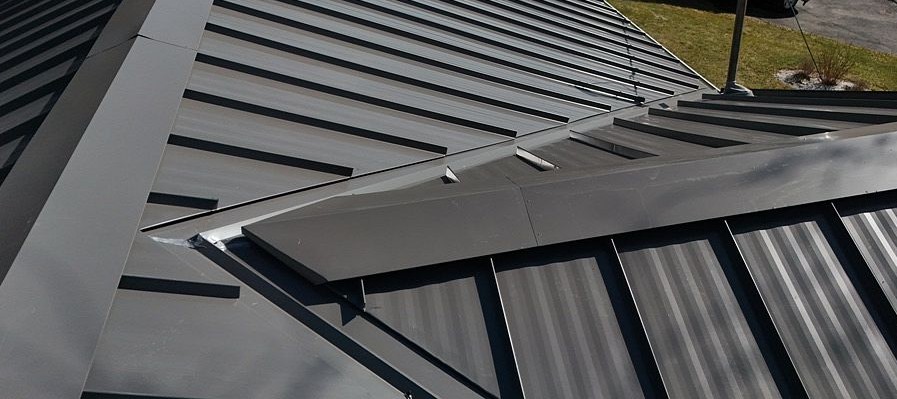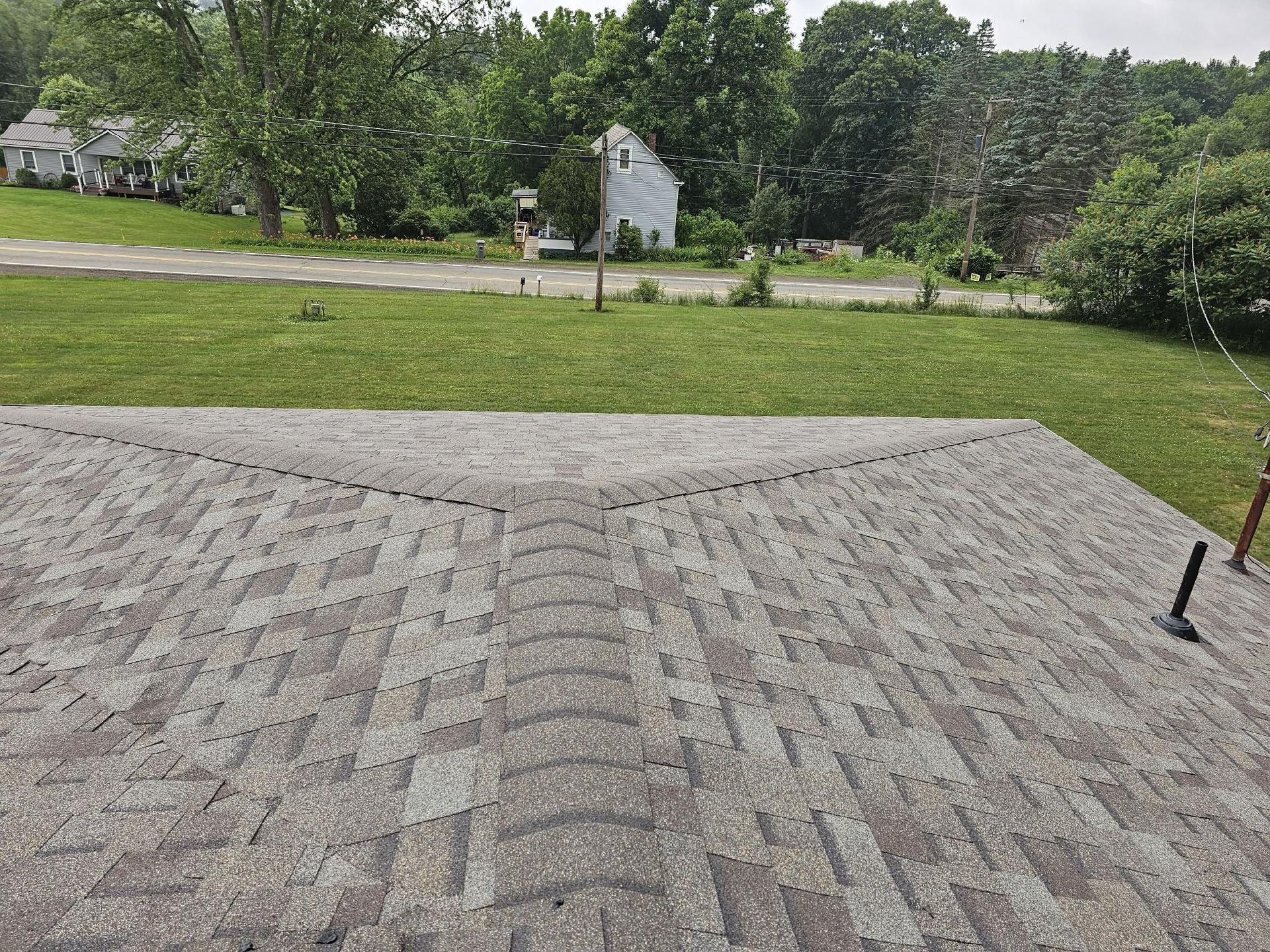Attic ventilation is an important factor to consider when assessing the overall performance of a roof. Without proper attic ventilation, it can cause serious damage and long-term deterioration of the roof due to moisture buildup and heat build up, leading to bigger issues such as mold growth or even structural failure. Therefore, understanding the impact that adequate attic ventilation has on roof performance is essential for any homeowner looking to maintain their roof in optimal condition.
This article will explore how proper attic ventilation affects roof performance, exploring factors such as temperature control, preventing condensation and moisture accumulation, and eliminating ice dams during winter months. It will also discuss some of the best practices for ensuring proper attic ventilation—from vent size selection all the way through installation methods—in order to maximize your roof’s efficiency throughout its entire lifespan.
By taking into account this information you are sure to be able to make informed decisions about improving your own home’s rooftop system; allowing you to feel more secure knowing that your house is prepared for whatever comes its way!

What Is Attic Ventilation?
Attic ventilation is a process by which air from the outside is exchanged for stale, humidified air within an attic space. This exchange of air helps to reduce heat and moisture buildup in attics, thereby improving roof performance over time. Many homeowners opt to install vents on their roofs or soffit areas that allow fresh, outdoor air into their attics while also allowing indoor air out.
The benefits of proper attic ventilation are twofold: improved roof health and energy savings. When not properly ventilated, warm, moist air can accumulate inside your attic and cause condensation that can lead to damage such as rot and mold growth. Additionally, when too much hot air accumulates in the attic during summer months it can be transferred down into living spaces below resulting in higher cooling costs. By introducing cooler, dryer outside air through proper vents you help keep temperatures regulated throughout all seasons which will save you money on both heating and cooling bills year-round.
Proper attic ventilation also prolongs the life of your rooftop materials helping them last longer than they otherwise would without adequate airflow around them. With less humidity present in the environment there’s less chance of ice dams forming along eaves as well as fewer opportunities for pests and other critters to find entry points into your home through small cracks or crevices between shingles or sheathing material. Taking proactive measures like installing appropriate vents now can save you thousands of dollars in future repairs due to water infiltration or pest infestations later down the road.
Benefits Of Proper Attic Ventilation
Attic ventilation is an important component of roof performance. Properly installed and maintained attic ventilation can have numerous benefits to the home. It helps regulate temperatures, reduce moisture build-up, improve energy efficiency, and extend a roof’s lifespan.
During hot summer months, attic ventilation allows for cooler air to enter the space while expelling warm air out through vents or turbines on the roof’s crest. This ensures that heat does not become trapped in the attic; reducing strain on cooling systems within the house which may lead to lower electricity bills. Additionally, proper airflow reduces condensation levels by evacuating moist air from attics caused by activities like cooking and bathing inside the residence. Keeping humidity low helps prevent mold growth, decay of insulation materials, and warping of wooden structures inside the area above ceiling joists.
Lastly, it has been proven that adequate ventilation extends a roof’s life expectancy due to prevention of ice dam formation during winter months when snow accumulates on roofs with inadequate venting. Ice dams form as snow melts near heated portions of a building such as chimneys or walls causing water runoff to freeze at colder sections of a roof where melting snow cannot escape quickly enough leading to extensive damage over time if left unchecked. Therefore, installing sufficient intake and exhaust vents will ensure optimal thermal regulation throughout all four seasons benefiting both indoor living conditions and outdoor structural integrity of your rooftop system.
How Does Attic Ventilation Affect Roof Performance?
Attic ventilation is an important part of a roof’s performance. Properly ventilated attics can improve the longevity and efficiency of a home’s roof, as well as reduce energy costs by providing better insulation. By controlling temperature and humidity in the attic, proper ventilation helps to maintain the durability of the roof structure itself.
The effects of properly ventilating an attic on roof performance are numerous. Ventilation controls air circulation within the attic, which reduces heat buildup and prevents excessive moisture from building up inside the space. This helps to extend the life of shingles because they do not become overly hot or damp during extreme weather conditions like snowstorms or hot summers. It also improves insulation levels since warm air moves out while cooler air replaces it, reducing energy bills associated with cooling systems. Lastly, good airflow allows any mold spores that may be present to escape rather than accumulate and cause damage over time.
When considering how best to maximize your roof’s performance, proper installation and maintenance of adequate attic ventilation should be considered essential elements for achieving maximum efficiency and lifespan. Installing vents at both ends of a house will ensure optimal airflow throughout all sections of an attic, effectively pulling moisture away from vulnerable areas such as around windows or doors where condensation can occur quickly if left unchecked. Additionally, ensuring that soffit panels are clear and unobstructed will help keep temperatures regulated throughout the year without creating drafts or hotspots on either end of a property that could potentially cause trapping issues down the road.
Types Of Attic Ventilation
Attic ventilation is an important factor in roof performance and longevity. Without proper attic ventilation, moisture levels can rise exponentially and cause a myriad of problems for the roof itself as well as other parts of the home. To understand how to optimize your attic’s ventilation system and keep your roof top-notch, it helps to learn about the different types of attics available:
1) Ridge Vents – Consisting of a long strip that runs along the peak of the roof, ridge vents allow air into the attic while simultaneously letting warm, humid air out. These are commonly used with soffit vents which provide additional airflow through the sides of the house.
2) Gable Vents – Found on either side at the end of a gabled roof, these louvered or screened openings help draw hot air up from within using convectional currents. If properly sized according to square footage requirements, they make an efficient way to improve circulation throughout the entire space.
3) Power Vents – This type uses electric motors to pull moist, stale air out and replace it with fresh outside air. As these require electricity to operate, they should only be installed in homes where there is adequate power supply nearby.
The key takeaway here is that each type offers its own unique advantages and disadvantages; careful consideration must be taken when choosing one for your home’s application. Furthermore, all three options will need regular maintenance such as cleaning debris away from intake screens or removing leaves or pine needles caught around exhaust areas. Doing this regularly ensures optimal performance over time. Ultimately, selecting an appropriate option requires research and understanding what works best in your particular climate zone or region – not just based off aesthetics alone!

Proper Attic Ventilation And Energy Efficiency
Attic ventilation is an important factor in roof performance and energy efficiency. Properly ventilating an attic can provide numerous benefits, including increasing the lifespan of a roof, preventing ice damming, reducing indoor humidity levels, and improving air quality within a home. As such, it is essential to understand how proper attic ventilation works to ensure optimal roof performance and energy savings.
The two main types of attic ventilation are intake vents and exhaust vents. Intake vents allow fresh outdoor air into the attic space while exhaust vents remove humid air from inside. Ideally, intake and exhaust vents should be placed opposite each other to create air flow throughout the entire attic area. In addition, both power-driven fans or wind turbines may be used as part of the system for additional airflow if needed.
Proper attic ventilation helps enhance energy efficiency by keeping temperatures low during summer months. This prevents heat transfer through the ceiling that would otherwise increase cooling costs significantly due to rising electricity demand during peak usage times. Additionally, properly ventilated attics help reduce moisture buildup which could potentially cause damage to insulation materials or even lead to mold growth over time.
Overall, proper attic ventilation plays an integral role in ensuring maximum roof performance and energy efficiency in residential households. By understanding all aspects involved with installing efficient intake and exhaust systems, homeowners can enjoy long-term benefits associated with improved overall comfort levels year round without breaking the bank on expensive repairs or utility bills in the future.
Factors To Consider When Installing Attic Ventilation
Installing attic ventilation is an important step in ensuring roof performance and energy efficiency. There are several factors to consider when undergoing this task, as a proper installation will maximize the benefits of having attic ventilation. First, it is necessary to understand what type of ventilation system best suits your home’s specific needs. Attic ventilation systems can be divided into two categories: intake-based or exhaust-based systems. Intake-based systems draw air from outside the attic space while exhaust-based systems remove air through vents installed within the roof structure itself.
Another factor worth considering when installing attic ventilation is how many openings you need for optimal airflow. The amount needed depends on the size of your attic, as well as prevailing wind patterns and other environmental conditions such as humidity levels and temperature changes throughout the day. Additionally, there should be at least one square foot of vent area per 150 square feet of ceiling space in order to properly circulate air through the entire attic. Finally, it is also important to ensure that any insulation materials used around any new vents do not block airflow. Properly calculated spacers between insulation material and the vent opening will allow adequate airspace for efficient circulation of air during both summer and winter months.
The importance of correctly calculating all these components cannot be overstated; a properly installed ventilation system will help protect against damaging moisture buildup within the roofing materials which can lead to premature deterioration due to mold growth or loss of structural integrity caused by ice dams in cold climates. In addition, good flow of air across surfaces helps prevent indoor condensation build up during humid weather conditions resulting in improved interior comfort levels year round. By taking into account each aspect discussed above when planning out an attic ventilation project, homeowners can rest assured they are making an investment that will pay off with greater energy efficiency and more reliable roof performance over time.
Attic Ventilation And Roof Durability
The installation of attic ventilation plays a critical role in the durability of the roof. Properly installed, it reduces heat and moisture levels within the attic space, which can slow down the aging process of shingles and other materials used to construct roofs. In addition, when temperatures inside an attic are kept at moderate levels year-round, condensation is minimized—this helps keep moisture from infiltrating underlayments, causing rot or mold growth.
When installing attic ventilation, there are several factors that should be considered: size and type of vents; number of vents; location of vents; compatibility with existing roofing system (i.e., intake vs exhaust); climate zone considerations; local building codes for vent sizes; and insulation requirements. Additionally, if using a combination of different types of vents such as gable end vents and ridge vents, proper balancing will need to be established between them to ensure adequate airflow throughout the entire attic space.
Inspections by qualified professionals periodically can help identify any inadequacies in existing systems during either new construction or remodeling projects. As part of this inspection process, all components must be checked for appropriate sizing and placement according to code regulations for optimum performance and safety purposes.
TIP: Make sure you consult experienced contractors who specialize in attic ventilation systems before beginning your project so they can provide insight on what works best for your particular situation!
Cost And Maintenance Of Proper Attic Ventilation
When considering attic ventilation and its impact on roof performance, cost and maintenance are important considerations. Properly installed, ventilated attics can create a number of benefits, including improved energy efficiency and reduced condensation buildup. While these advantages come at some expense to install, they can also provide long-term savings in terms of both energy costs and maintenance needs for the roof.
The initial installation costs for an adequately vented attic will vary depending on the size of the area being addressed as well as the type of vents used. This could range from a few hundred dollars up to several thousand if more complex systems are required. However, over time this investment may be recouped by decreased energy costs due to improved insulation provided by properly functioning intake and exhaust vents. In addition, proper airflow within the attic space helps reduce moisture levels which can extend the life of shingles or other roof coverings that might otherwise suffer damage from trapped humidity or excessive heat exposure.
Overall, while there is an upfront financial commitment involved with installing adequate ventilation systems in attics, this expenditure may ultimately prove beneficial in terms of both comfort and durability when it comes to protecting roofs against weather-related damage. Homeowners should consider all aspects before making a decision about what type of system best suits their particular needs.
Differences In Attic Ventilation For Different Roof Styles
Attic ventilation is an important element of roof performance and should be considered when choosing a style for the roof. Different styles require different types of attic ventilation, depending on how the structure is designed. The purpose of this article is to explore the differences in attic ventilation for various types of roofs based on their design characteristics.
Gabled roofs are characterized by two sloping sides that meet at a point at the top, forming an inverted V shape. They typically have excellent natural air circulation since there are soffit vents along both sides of the eaves as well as ridge vents along the peak. This allows warm air to escape through these openings while cooler air enters from outside, creating an effective system for regulating temperatures within the attic space.
Flat or low-slope roofs lack natural air flow due to their construction, making them more difficult to ventilate than gabled roofs. In order to provide adequate airflow, they must often rely on mechanical systems such as turbines or fans that can draw out hot air and replace it with cool air from outside. While these methods may be slightly more expensive up front, they help reduce energy costs over time by keeping indoor temperatures stable and preventing moisture build-up which can lead to mold growth in attics without proper ventilation.
No matter what type of roofing system you choose for your home, understanding the importance of proper attic ventilation will ensure its longevity and optimal performance throughout its lifespan. With thoughtful consideration given to each roof’s individual needs during installation, homeowners can avoid costly problems down the road related to inefficiently vented attics caused by inadequate maintenance or improper design choices.

How To Ensure Proper Attic Ventilation For Optimal Roof Performance
Attic ventilation is an essential part of a roofing system’s performance. Improper ventilation can cause many issues, such as premature failure or water damage due to trapped moisture and condensation buildup. To ensure proper attic ventilation for optimal roof performance, there are several factors that must be taken into consideration.
Firstly, the type of roof should be identified in order to determine how much air flow is needed to keep the space properly ventilated. For example, flat roofs require more ventilation than sloped roofs because they tend to trap heat and moisture more easily. Additionally, it is important to choose the right size and type of vents for the particular kind of roof being installed. Vent types vary from ridge vents and turbines to static louvers and gable end vents; each with its own unique purpose and advantages when used correctly.
Finally, building codes also need to be taken into account when determining what type of attic ventilation will work best for any given situation. In general, attics should have at least 1 square foot of net free area (NFA) per 300 square feet of ceiling area in order to provide adequate airflow throughout the entire space. This NFA requirement may change depending on climate zone or other local regulations so it is important for homeowners and contractors alike to familiarize themselves with their region’s guidelines before attempting installation or repairs on any existing structure.
By taking these steps into consideration prior to beginning any project involving attic ventilation, homeowners can rest assured that their roofs will perform up to standards while helping them save money on energy costs over time thanks to improved insulation values resulting from better circulation within their home’s living spaces.









